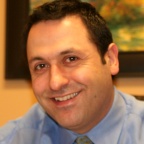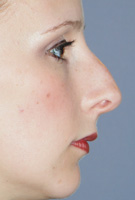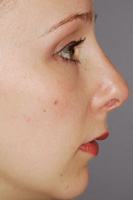Dr. Nizar Merheb, Facial Cosmetic & Reconstructive Surgery Center

What is a nasal septum and how does it affect breathing?
The nasal septum is the structure which normally divides the nasal cavity into two halves. Although it is often a little crooked, it does not usually cause problems. However, sometimes the septum is so deformed that the air passage is blocked in one or both nostrils. In this case, the nasal septum can be deviated without being visible from the outside or it can occur with one or many visible external deformities, such as a “hump” or a crooked nose.
 How does a deviated nasal septum occur?
How does a deviated nasal septum occur?
A deviated septum is either present from birth or is subsequent to trauma to the nose. The risk of occurrence of nasal septum deformities increases after injury to the nose.
How will you look after surgery?
Following surgery, a lightweight nasal splint is placed on the nose to help maintain its shape, but it is removed after seven days. The skin stitches are removed on the fourth day after surgery. Internal nasal splints may be inserted at the time of surgery to protect the septum. These are also removed on the fourth day. Bruising occurs around the eyes, but begins to fade within a few days. Discoloration usually disappears in two weeks. Patients need to refrain from heavy strenuous activity for two to three weeks. If the nasal bones are shaped during surgery, patients are unable to wear glasses for up to six weeks.
In summary, the recovery takes one to two weeks, but most people resume their normal activities within a week. Minimal discomfort can be expected following the procedure, but it can be controlled with medications prescribed by your surgeon.
 How can you better communicate with your surgeon to achieve the results you are looking for?
How can you better communicate with your surgeon to achieve the results you are looking for?
If you’re considering a “nose job,” or any facial cosmetic surgery, it is a big decision. Most likely, you recognize there is room for improvement but are not exactly sure what you need. You may be spending time in front of your mirror trying to simulate surgical results by pulling and turning side to side in eff orts to see your profile. On the other hand, you may be sure of what you want but think it cannot be achieved realistically. Computer imaging can help you make the best decision by allowing you to view the potential results of a cosmetic procedure using your own photos before it is actually performed.
Computer imaging is a logical first step if you’re considering cosmetic surgery. Ask your doctor if he or she offers this new technology; it can help you determine if a procedure is right for you. During a private consultation, your doctor will transfer your photos to a computer and alter them, based on your concerns and goals, to demonstrate potential changes.
Keep in mind that this technology cannot show you the exact changes and should not be used as a guarantee of surgical results. However, it is a great way to communicate with your doctor and be sure he or she knows exactly what results you’re looking for.
Nose surgery is an extremely precise surgery. Paramount to the successful outcome of the procedure is a patient with realistic expectations and a surgeon who has a thorough knowledge of the nose and its function. TPW
